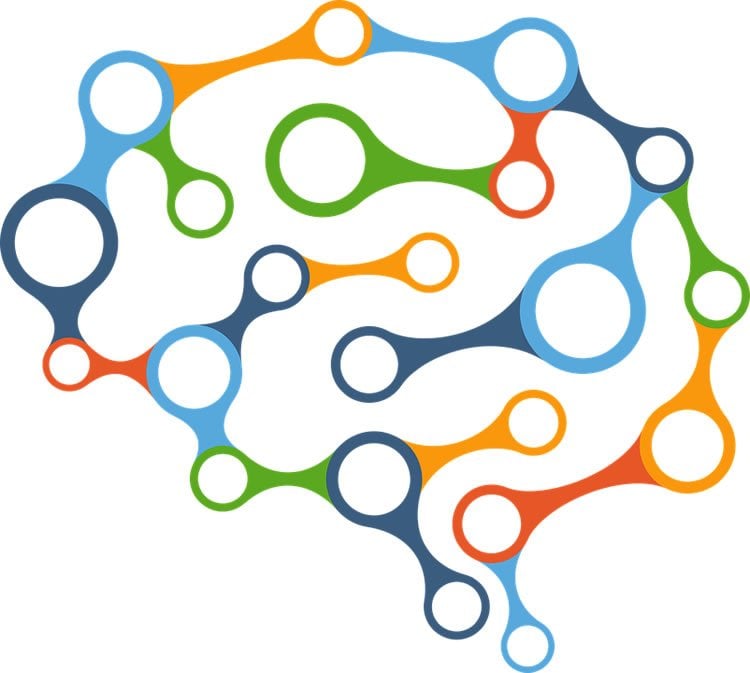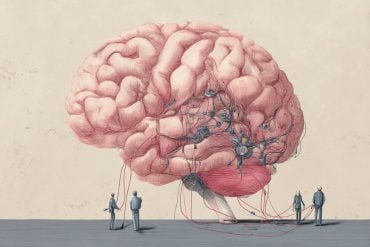Summary: New theory of suggests the brain’s dynamic properties are the best predictors of human intelligence.
Source: University of Illinois.
Centuries of study have yielded many theories about how the brain gives rise to human intelligence. Some neuroscientists think intelligence springs from a single region or neural network. Others argue that metabolism or the efficiency with which brain cells make use of essential resources are key.
A new theory, published in the journal Trends in Cognitive Sciences, makes the case that the brain’s dynamic properties – how it is wired but also how that wiring shifts in response to changing intellectual demands – are the best predictors of intelligence in the human brain.
“When we say that someone is smart, we understand intuitively what that means,” said University of Illinois psychology professor Aron Barbey, the author of the new paper. “Usually, we’re referring to how good they are at making decisions and solving particular types of problems. But recently in neuroscience, there’s been a focus on understanding in biological terms how general intelligence arises.” That requires studying the structural and functional characteristics of the brain.
Scientists have long understood that the brain is modular, with different regions supporting specific abilities, Barbey said.
“For example, brain regions within the occipital lobe at the back of the brain are known to processes visual information,” he said. But interpreting what one sees requires the integration of information from other brain modules.
“To identify an object, we also must classify it. That doesn’t depend only on vision. It also requires conceptual knowledge and other aspects of information processing, which are supported by other brain regions,” he said. “And as the number of modules increases, the type of information represented in the brain becomes increasingly abstract and general.”
Scientists have struggled to understand how the brain organizes itself and have tried to identify a structure or region that performs that function.
“The prefrontal cortex, a structure at the front of the brain, for example, has expanded dramatically over the course of human evolution,” Barbey said. Because this brain region is known to support several higher-order functions such as planning and organizing one’s behavior, scientists have suggested that the prefrontal cortex drives general intelligence.
“But really, the entire brain – its global architecture and the interactions among lower- and higher-level mechanisms – is required for general intelligence,” Barbey said.
Brain modules provide the basic building blocks from which larger, “intrinsic connectivity networks” are constructed, Barbey said. Each network includes multiple brain structures that are activated together when a person engages a particular cognitive skill.
“For example, the frontoparietal network is activated when attention is focused on external cues, the salience network is engaged when attention is directed to relevant events, and the default mode network is recruited when attention is focused internally,” he said.
Neural networks are made up of two types of connections that are believed to support two types of information processing, Barbey said.
“There are the pathways that encode prior knowledge and experience, which we call ‘crystallized intelligence.’ And there are adaptive reasoning and problem-solving skills that are quite flexible, called ‘fluid intelligence,'” he said.
Crystallized intelligence involves robust connections, the result of months or years of neural traffic on well-worn pathways. Fluid intelligence involves weaker, more transient pathways and connections that are formed when the brain tackles unique or unusual problems.

“Rather than forming permanent connections, we are constantly updating our prior knowledge, and this involves forming new connections,” Barbey said. The more readily the brain forms and reforms its connectivity in response to changing needs, the better it works, he said.
Although researchers have known that flexibility is an important characteristic of human brain function, only recently has the idea emerged that flexibility provides the basis for human intelligence, he said.
“General intelligence requires both the ability to flexibly reach nearby, easy-to-access states – to support crystallized intelligence – but also the ability to adapt and reach difficult-to-access states – to support fluid intelligence,” Barbey said. “What my colleagues and I have come to realize is that general intelligence does not originate from a single brain region or network. Emerging neuroscience evidence instead suggests that intelligence reflects the ability to flexibly transition between network states.”
Barbey directs the Decision Neuroscience Laboratory at the Beckman Institute for Advanced Science and Technology and is affiliated with the Carl R. Woese Institute for Genomic Biology, both at the U. of I.
Funding: The research was supported by the Office of the Director of National Intelligence Intelligence Advanced Research.
Source: Diana Yates – University of Illinois
Publisher: Organized by NeuroscienceNews.com.
Image Source: NeuroscienceNews.com image is in the public domain
Original Research: Full open access research for “Network Neuroscience Theory of Human Intelligence” by Aron K. Barbey in Trends in Cognitive Sciences. Published online November 19 2017 doi:10.1016/j.tics.2017.10.001
[cbtabs][cbtab title=”MLA”]University of Illinois “Theory: Flexibility is at the Heart of Human Intelligence.” NeuroscienceNews. NeuroscienceNews, 20 November 2017.
<https://neurosciencenews.com/flexibilty-human-intelligence-7985/>.[/cbtab][cbtab title=”APA”]University of Illinois (2017, November 20). Theory: Flexibility is at the Heart of Human Intelligence. NeuroscienceNews. Retrieved November 20, 2017 from https://neurosciencenews.com/flexibilty-human-intelligence-7985/[/cbtab][cbtab title=”Chicago”]University of Illinois “Theory: Flexibility is at the Heart of Human Intelligence.” https://neurosciencenews.com/flexibilty-human-intelligence-7985/ (accessed November 20, 2017).[/cbtab][/cbtabs]
Abstract
Network Neuroscience Theory of Human Intelligence
An enduring aim of research in the psychological and brain sciences is to understand the nature of individual differences in human intelligence, examining the stunning breadth and diversity of intellectual abilities and the remarkable neurobiological mechanisms from which they arise. This Opinion article surveys recent neuroscience evidence to elucidate how general intelligence, g, emerges from individual differences in the network architecture of the human brain. The reviewed findings motivate new insights about how network topology and dynamics account for individual differences in g, represented by the Network Neuroscience Theory. According to this framework, g emerges from the small-world topology of brain networks and the dynamic reorganization of its community structure in the service of system-wide flexibility and adaptation.
Trends
Accumulating evidence from network neuroscience indicates that g depends on the dynamic reorganization of brain networks, modifying their topology and community structure in the service of system-wide flexibility and adaptation.
Whereas crystallized intelligence engages easy-to-reach network states that access prior knowledge and experience, fluid intelligence recruits difficult-to-reach network states that support cognitive flexibility and adaptive problem-solving.
The capacity to flexibly transition between networks states therefore provides the basis for g – enabling rapid information exchange across networks and capturing individual differences in information processing at a global level.
This framework sets the stage for new approaches to understanding the neural foundations of g, examining individual differences in brain network topology and dynamics.
“Network Neuroscience Theory of Human Intelligence” by Aron K. Barbey in Trends in Cognitive Sciences. Published online November 19 2017 doi:10.1016/j.tics.2017.10.001






